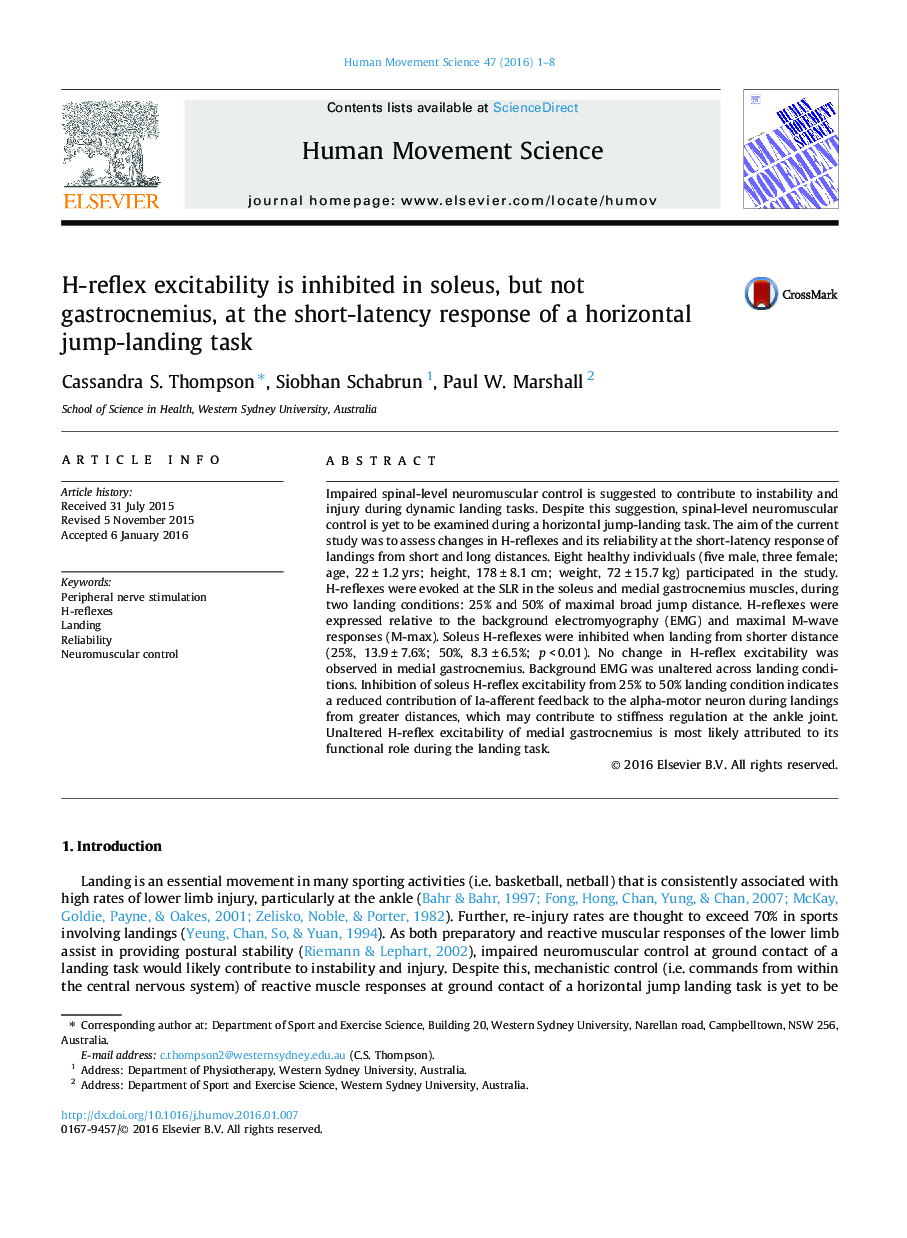| Article ID | Journal | Published Year | Pages | File Type |
|---|---|---|---|---|
| 7291392 | Human Movement Science | 2016 | 8 Pages |
Abstract
Impaired spinal-level neuromuscular control is suggested to contribute to instability and injury during dynamic landing tasks. Despite this suggestion, spinal-level neuromuscular control is yet to be examined during a horizontal jump-landing task. The aim of the current study was to assess changes in H-reflexes and its reliability at the short-latency response of landings from short and long distances. Eight healthy individuals (five male, three female; age, 22 ± 1.2 yrs; height, 178 ± 8.1 cm; weight, 72 ± 15.7 kg) participated in the study. H-reflexes were evoked at the SLR in the soleus and medial gastrocnemius muscles, during two landing conditions: 25% and 50% of maximal broad jump distance. H-reflexes were expressed relative to the background electromyography (EMG) and maximal M-wave responses (M-max). Soleus H-reflexes were inhibited when landing from shorter distance (25%, 13.9 ± 7.6%; 50%, 8.3 ± 6.5%; p < 0.01). No change in H-reflex excitability was observed in medial gastrocnemius. Background EMG was unaltered across landing conditions. Inhibition of soleus H-reflex excitability from 25% to 50% landing condition indicates a reduced contribution of Ia-afferent feedback to the alpha-motor neuron during landings from greater distances, which may contribute to stiffness regulation at the ankle joint. Unaltered H-reflex excitability of medial gastrocnemius is most likely attributed to its functional role during the landing task.
Related Topics
Life Sciences
Neuroscience
Cognitive Neuroscience
Authors
Cassandra S. Thompson, Siobhan Schabrun, Paul W. Marshall,
